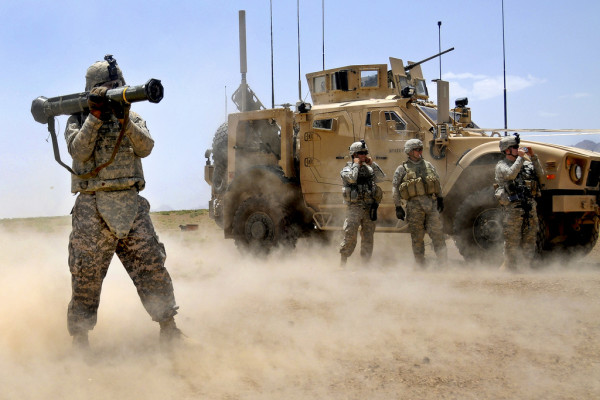

In June of 1812, Napoleon set off to invade Russia with one of the largest armies the world had ever seen. Six months later, a mere fraction of Napoleon’s army — perhaps as little as 5% — hobbled home across the Niemen River.
Historians have long wondered how one of the world’s most brilliant generals could have failed so spectacularly — after all, Napoleon lost relatively few men in battle. Most blamed the army’spoor logistics, or the bitter Russian winter.
But Carl von Clausewitz, the noted Prussian military theorist, blamed another culprit: communicable disease.
As the Prussian notes in his seminal work, “On War,” Napoleon began his campaign in June with a center army nearly 300,000 men strong. Less than two months later, he had lost nearly a third of his fighting strength, without even having fought a major battle. Indeed, Clausewitz notes, “It is not unusual that a victorious army suffers greater losses from sickness than from battle.”
Napoleon was hardly unique. Armies have traditionally succumbed more to illness than anything else. Little mentioned in military history, however, is how preventive medicine, or a lack thereof, has had a dramatic impact on the battlefield.
During the American Revolution, Britain’s Royal Navy was unable to sustain its blockade of France for more than a few weeks at a time, following the latter’s entry into America’s war of independence after the Battle of Saratoga. French troopships, loaded with men and material, routinely landed in the New World, where they had a decisive impact on the campaign.
Related: Why the woobie is the greatest military invention ever fielded.
How could the French slip past the British blockade so easily? Simple. The Royal Navy could only remain at sea for a few weeks before British sailors became crippled with disease, most notably, scurvy.
Towards the end of the Revolutionary War, physicians within the Royal Navy ushered in remarkable improvements in preventive medicine. One doctor, having observed the rapid spread of communicable disease, instituted a thorough sanitation program, ordering living quarters scrubbed, and bedding aired out during the day.
The Royal Navy’s advancements in basic sanitation were coupled with improvements in sailors’ diets. As described by Piers Macksey in his book “The War for America: 1775-1783,” by the mid-18th century, doctors had established a link between lemon juice, which contained vitamin C, and the prevention of scurvy. In fact, Captain James Cook had circumnavigated the world in 1775 without losing a single sailor to the disease. Still, it would take nearly 20 more years for the Royal Navy to regularly issue lemon juice to sailors. But the results were little short of miraculous: the Royal Navy had all but eradicated scurvy within the ranks after five years. By 1815, these advances in preventive medicine and nutrition had reduced sickness nearly sevenfold, giving the Royal Navy the manpower necessary to bottle Napoleon up in continental Europe.
Advances in both food production and preventive medicine allowed nations to not only field much larger armies, but to minimize casualties as well. In the early 19th century, armies often foraged for food, and were forced to halt in the afternoon to gather wood and build cooking fires. A century later, during World War I, industrialized nations were able to sustain million-man armies with canned foods. If you were to fast forward yet another century, you’d find soldiers in Afghanistan actually gaining weight on 31 flavors of ice cream in the Kandahar dining facility.
But modern war isn’t all fun and games and Salsa Night. Indeed, though modern soldiers may be able to enjoy the latest culinary delights, they still often find themselves crammed into close living quarters, as soldiers have been for millennia perpetuating the rapid spread of communicable disease. But steady advances in immunization and other medicines diminished the number of soldiers who died or were otherwise incapacitated by illness. Whereas deaths due to “other” means (e.g., disease) outnumbered those killed in battle by 50% during the American Civil War, they comprised only a quarter of all losses during the Second World War.
Losses due to disease continued to decline rapidly over the latter half of the 20th century, to the point where gangrene, malaria, and trench foot, are practically unheard of. In fact, some might argue that vaccinations have proven such miraculous feats that many today take them for granted (perhaps explaining why families today have recklessly neglected to have their children immunized).
Of course, tanks and airplanes win battles, that much is clear. But forget even getting to the battlefield without the medical care necessary to field, feed, and sustain a healthy fighting force. Indeed, the most powerful battlefield innovations of the last few hundred years haven’t been gunpowder and gasoline, but rather, soup cans, needles, and lemon juice.